How to Spot a Drought-Tolerant Plant
Have you wondered why some plants can handle intense sun and infrequent watering while others wilt? With rapidly growing drought conditions through much of the U.S., the desire to add plants to the landscape that can handle hot and dry climates is on the rise. Often you can find both types of plants sitting alongside each other in your local nursery, and it’s not always easy to tell the difference between the two. Wouldn’t it be nice to be able to tell if a plant is drought tolerant just by looking at it? Thankfully, drought-tolerant plants have one or more traits that you can look for the next time you are shopping for new plants.
Plants that can survive in hot and dry conditions have certain traits that enable them to not only grow but thrive in semiarid to desert climates with sporadic water availability. These traits, or adaptations, help to protect them from the full impact of the sun’s rays, limit the amount of water lost and make the most of what little water they receive. Fall is the best time of year to add new plants to the landscape, and by searching for drought-tolerant plants with one or more of these water-saving adaptations, you’ll have a beautiful garden that can handle drought conditions with minimal water. Let’s take a look at some these traits so that you’ll be able to recognize them the next time you are looking to add new plants to your landscape.
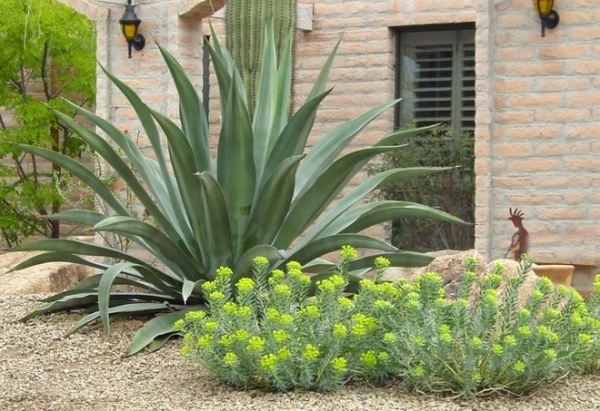
Succulent leaves and stems. When people think of drought-tolerant plants, succulents immediately come to mind, and with good reason. Their fleshy leaves and stems are uniquely designed to store rainwater or water from other sources. The succulent leaves act as a savings account, holding on to the water and releasing it back to the plant when water is scarce.
Succulent plants can usually be identified by their thick, fleshy leaves or stems, which have a waxy surface that helps to prevent water from being lost. In some cases there aren’t any leaves but a green stem instead. Cacti, like barrel (Ferocactus spp) and saguaro (Carnegiea gigantea), store water inside their central stem.
Shown: Weber’s agave (Agave weberi) and silver spurge (Euphorbia rigida)
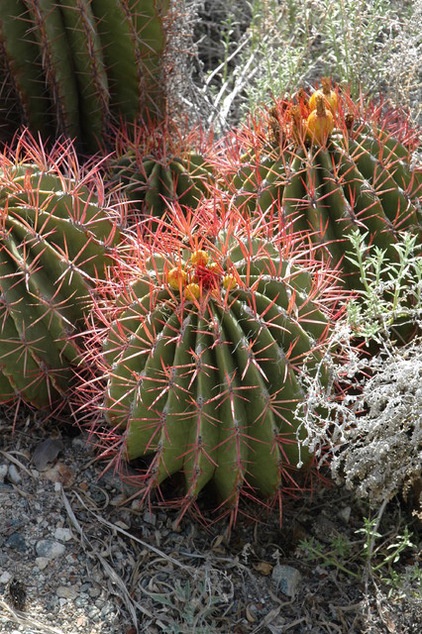
The next time you are walking by a prickly cactus, like the barrel cactus (Ferocactus sp) shown here, take a closer look at the spines. Have you ever wondered why they’re there, besides to prick an unsuspecting passerby?
The spines serve many purposes, one of which is protecting cacti from being eaten by animals. However, did you know that the spines also help cacti survive the intensity of the sun’s rays? Spines are modified leaves that provide shade for cacti. It may seem that a small spine would add relatively little shade from the sun, but in large numbers, they do make a difference. The shade from the spines lowers the temperature on the surface, which reduces water loss.
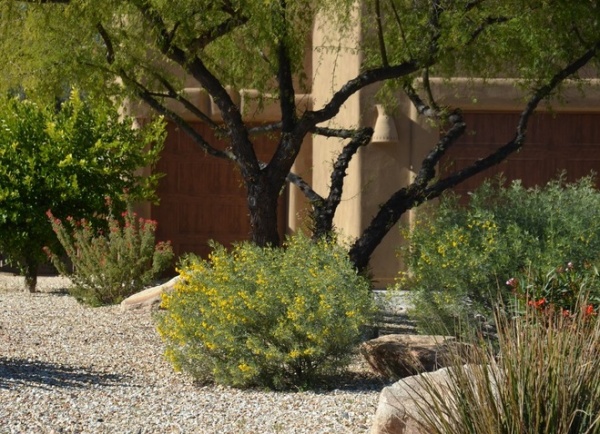
Can you tell what particular trait the plants in this landscape have that helps them to thrive in this desert garden? I’ll give you a hint — it’s all about the color, shape and size of the leaves. Most of the water absorbed by plants is later lost through the leaves. For this reason the leaves of many drought-tolerant plants have certain traits that help to slow down water evaporation.
Let’s take a look at what leaf traits to look for when you’re shopping for drought-tolerant plants.
Shown: A desert landscape with drought-tolerant Baja fairy duster, feathery cassia and giant hesperaloe (Hesperaloe funifera)
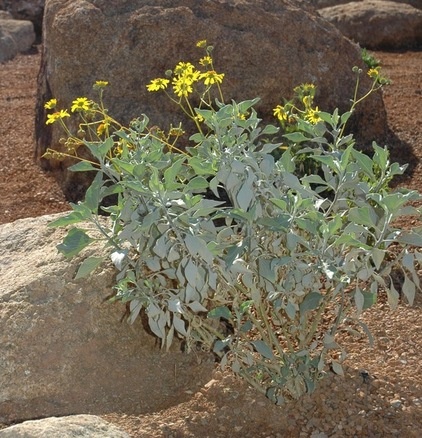
Glaucous coloring. If you have visited the Southwest or other arid regions, you may have been struck by the absence of bright green plants. There are plenty of greens in the arid landscape, but they are usually subtler and have shades ranging from medium blue-gray-green all the way to gray. Here we see the gray foliage of brittlebush (Encelia farinosa).
The gray color comes from tiny hairs that cover the surface of the leaves, which reflect the sun’s rays away from the leaf. A cooler temperature at the leaf surface means that less water is lost to the atmosphere; a hotter temperature means more water evaporates from the leaves.
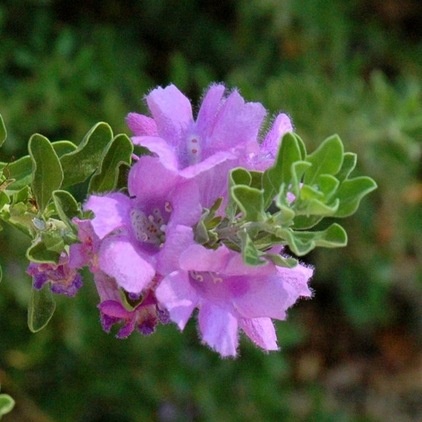
Leaves aren’t the only part of an arid-adapted plant covered with tiny hairs. In some cases hairs can also be found on flowers or stems, and they work in the same way they do when found only on leaves. Here tiny hairs cover the leaves and flowers of Rio Bravo Texas sage (Leucophyllum frutescens ‘Rio Bravo’).
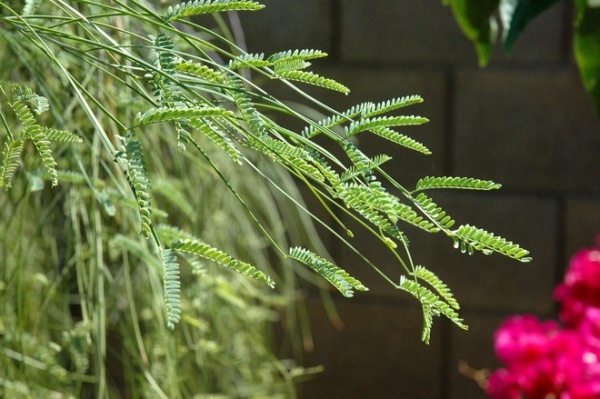
Small leaves. As mentioned, drought-tolerant plants survive in hot, dry climates by holding on to as much water as they can. So far, we’ve talked about how succulent plants store water and how tiny hairs located on leaves and flowers can help limit water loss.
When looking for drought-tolerant plants, keep an eye out for tiny leaves. Plants with large leaves can lose quite a bit of water from the large surface area that is exposed to the atmosphere. As a result, you’ll often find that the leaves of drought-tolerant plants have small to tiny leaves (called leaflets), which are attached to a central stem, making up a compound leaf. Smaller leaves have less surface area and therefore less water loss.
Shown: The tiny leaflets of the palo blanco tree
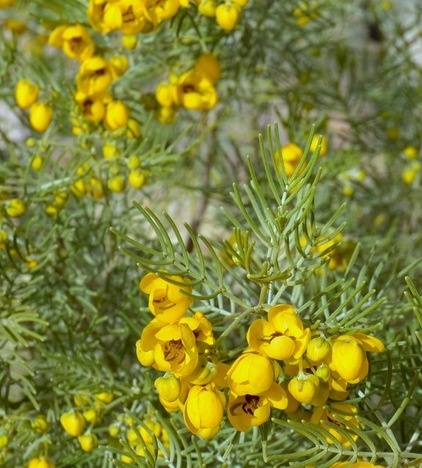
Sometimes the shape of the small leaflets can be rather unusual, as with feathery cassia (Senna artemisioides), and resemble tiny stems instead. They still work in the same way that more traditionally shaped leaves do.
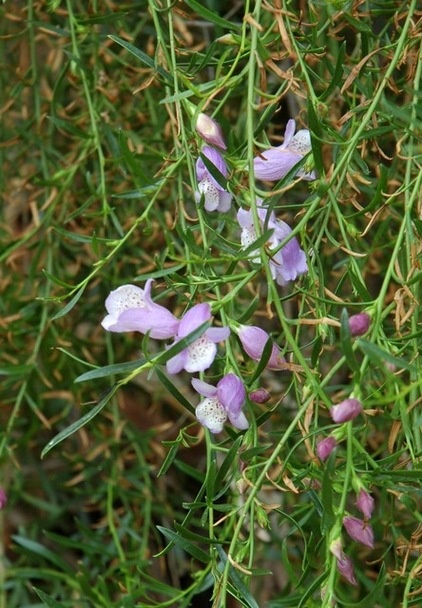
The needle-shaped leaves of Summertime Blue (Eremophila ‘Summertime Blue’) help keep evaporation to a minimum.
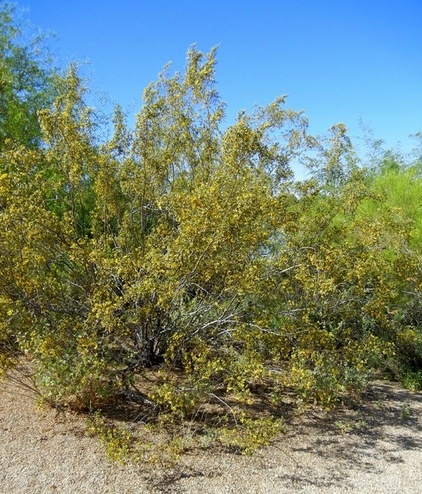
Coated leaves. Some plants, such as creosote (Larrea tridentata), shown, and jojoba (Simmondsia chinensis), prevent water loss through their wax- or oil-coated leaves. These leaves tend to have a shiny appearance from the wax or oil, which also helps reflect the sun’s rays and keep the surface temperature cooler.
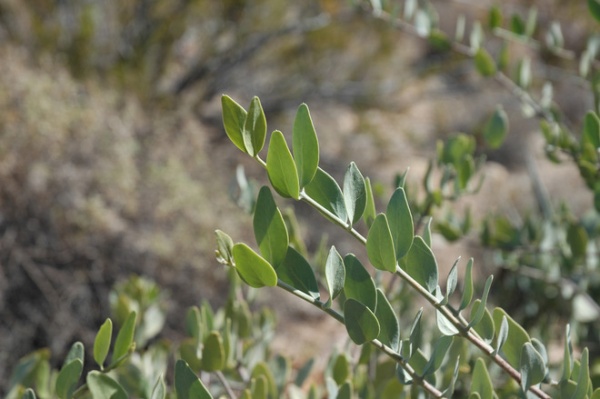
Vertical leaves. The next time you find yourself at a plant nursery, take a look at how the different plants have their leaves are positioned. You’ll notice that most plants have their leaves arranged horizontally, with the top surface facing upward to receive full sun.
But you may notice that some plants have their leaves arranged vertically so that the leaf’s surface faces to the side. This trait helps to limit water loss and keep the leaf temperature cooler by making the most of morning and late-afternoon sun, while avoiding the intense rays of the midmorning and afternoon sun. Jojoba (Simmondsia chinensis) is a great example of a plant whose leaves are positioned vertically.
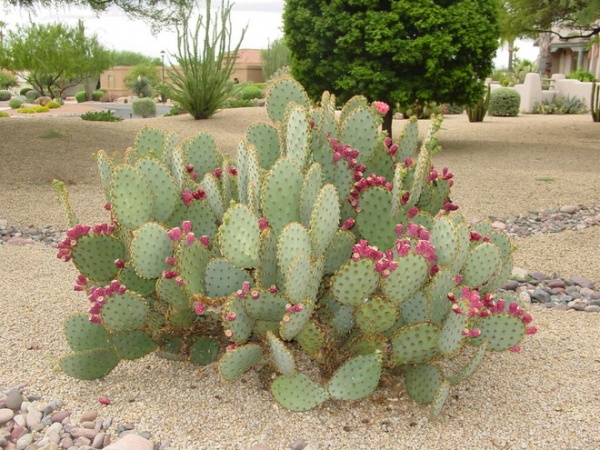
All prickly pear species (Opuntia spp) have pads, which are modified leaves, arranged vertically. The pads would burn from the intense sunlight if the flat portion faced up, which is why you’ll always see prickly pear pads arranged vertically.
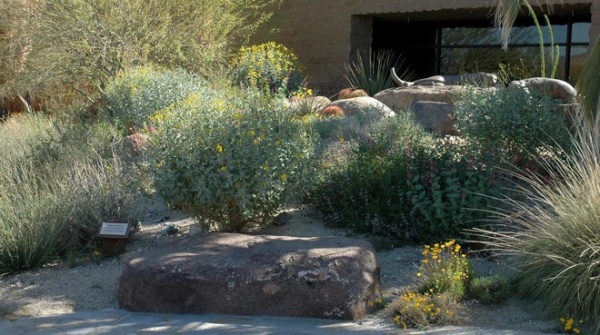
As we have seen, arid-adapted plants have many traits that help them to grow in areas with little rainfall or supplemental water. Although a plant may have one or more of the drought-tolerant traits we have discussed, it is best to check other resources to make sure that the plant in question is in fact drought tolerant. Helpful resources include your cooperative extension office, local master gardener or nursery professional. Another great resource for native, drought-tolerant plants can be found online at the Lady Bird Johnson Wildflower Center.
More: Great Plants for Lush, Low-Water Gardens












